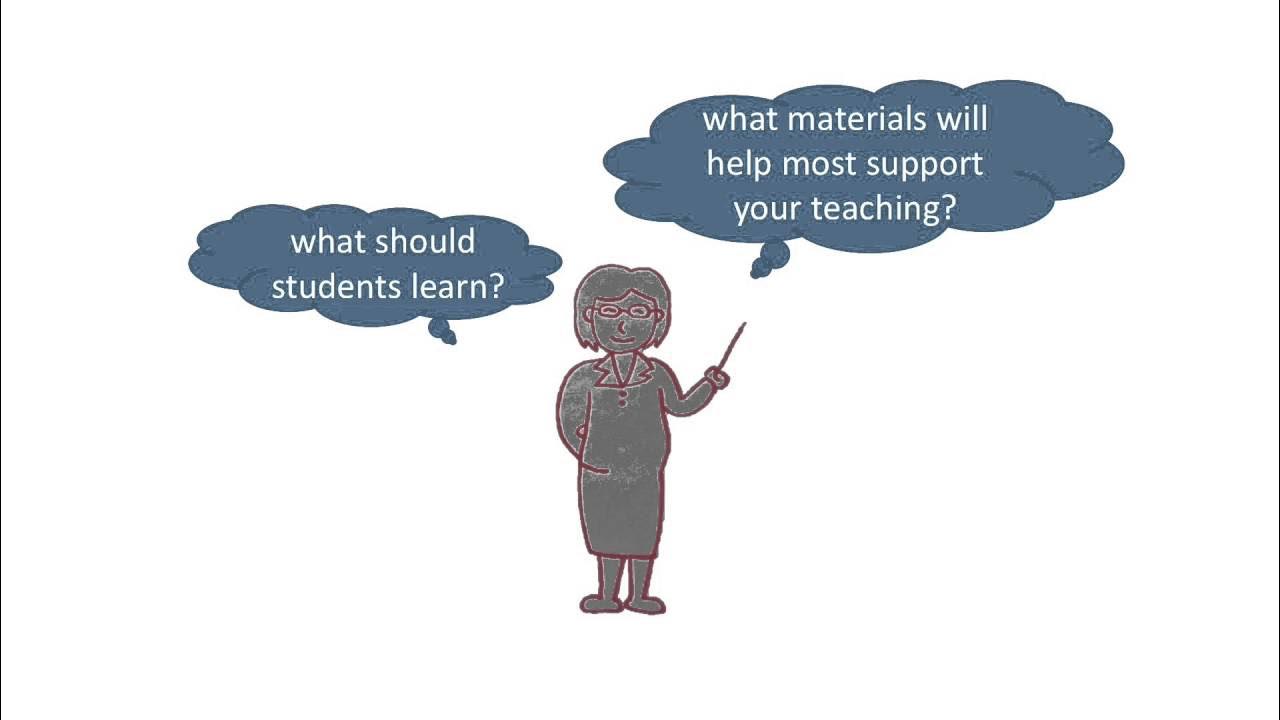The Steps of a Lesson
Summary
TLDREffective teaching goes beyond following activities in a student book; it requires connecting lessons to students' abilities, learning styles, and course objectives. A well-structured lesson plan acts as a roadmap, guiding both the teacher and students toward clear, measurable goals. It includes six core steps: Warm Up, Present, Practice, Apply, Extend, and Wrap Up. A good lesson plan ensures that all activities are well-sequenced and the necessary materials are ready, providing teachers with clarity and maximizing student success.
Takeaways
- 😀 Experienced teachers go beyond simply following student book activities—they must connect those activities to students' abilities, learning styles, and course objectives.
- 😀 Effective teaching starts with a well-thought-out lesson plan that aligns with students' needs and learning goals.
- 😀 A lesson plan is compared to a roadmap, guiding the teacher and students toward the final learning objective.
- 😀 The final destination of a lesson is the learning objective, which specifies measurable and observable student performance.
- 😀 A lesson objective outlines what students should be able to do by the end of the lesson in a way that can be seen and tested.
- 😀 Lesson objectives guide both the students and the teacher, with the lesson plan acting as the map to reach those objectives.
- 😀 A good lesson plan ensures students' success by defining clear objectives and sequencing activities to meet those goals.
- 😀 A complete lesson plan provides detailed, step-by-step instructions for every aspect of the class.
- 😀 Lesson plans help teachers prepare by listing the necessary materials and resources for effective class activities.
- 😀 Teachers should integrate activities from the student book into their instruction, using them as key components of the lesson.
- 😀 Each lesson follows a standard format with six core steps: warm-up, present, practice, apply, extend, and wrap-up, with each step described as an action the teacher takes.
Q & A
Why is it important for teachers to go beyond just following the activities in a student book?
-It is important because effective teaching involves tailoring the activities to the students' abilities, learning styles, and course objectives, ensuring that learning is both personalized and effective.
How does a lesson plan act as a guide for teachers and students?
-A lesson plan functions like a roadmap, outlining the necessary steps to reach the final educational goal, guiding both the teacher and the students throughout the learning process.
What are lesson objectives, and why are they important in a lesson plan?
-Lesson objectives are clear, measurable, and observable goals that define what students are expected to achieve during the lesson. They are essential because they provide direction and allow for assessment of student progress.
What are the key benefits of having a well-constructed lesson plan?
-A well-constructed lesson plan ensures clear objectives, organizes activities in a logical sequence for success, provides step-by-step instructions for class moments, and helps prepare necessary materials and resources.
How do the activities in the student book fit into a teacher's lesson plan?
-The activities in the student book should be integrated as a key part of the lesson, helping to reinforce and apply the lesson's objectives in a structured way.
What are the six core steps of an effective lesson plan?
-The six core steps are warm-up, present, practice, apply, extend, and wrap-up. These steps represent the actions a teacher takes to guide students through the lesson.
How can lesson planning improve the overall success of a class?
-Lesson planning improves success by clearly defining objectives, organizing the flow of activities, preparing necessary materials, and ensuring that every moment in the class contributes to the students' learning progress.
What role do lesson objectives play in a teacher's planning process?
-Lesson objectives serve as the foundation of the plan, guiding the teacher's choices for activities and assessments, ensuring that every part of the lesson is purposeful and aligned with the desired learning outcomes.
Why should teachers plan their lessons step by step, instead of improvising?
-Planning step by step ensures that all learning goals are covered, the lesson progresses in a logical order, and students are provided with the necessary support at each stage, leading to better engagement and success.
What is the purpose of the warm-up step in a lesson plan?
-The warm-up step engages students, helps activate prior knowledge, and prepares them mentally for the upcoming lesson, setting the stage for more focused learning.
Outlines

Dieser Bereich ist nur für Premium-Benutzer verfügbar. Bitte führen Sie ein Upgrade durch, um auf diesen Abschnitt zuzugreifen.
Upgrade durchführenMindmap

Dieser Bereich ist nur für Premium-Benutzer verfügbar. Bitte führen Sie ein Upgrade durch, um auf diesen Abschnitt zuzugreifen.
Upgrade durchführenKeywords

Dieser Bereich ist nur für Premium-Benutzer verfügbar. Bitte führen Sie ein Upgrade durch, um auf diesen Abschnitt zuzugreifen.
Upgrade durchführenHighlights

Dieser Bereich ist nur für Premium-Benutzer verfügbar. Bitte führen Sie ein Upgrade durch, um auf diesen Abschnitt zuzugreifen.
Upgrade durchführenTranscripts

Dieser Bereich ist nur für Premium-Benutzer verfügbar. Bitte führen Sie ein Upgrade durch, um auf diesen Abschnitt zuzugreifen.
Upgrade durchführenWeitere ähnliche Videos ansehen

Teori, Contoh, dan Ilustrasi Strategi Pembelajaran berdiferensiasi Dalam Kurikulum merdeka

How to teach listening

How to design a language curriculum

CARA MENGAJAR YANG IDEAL ~ KETERAMPILAN DASAR MENGAJAR

Keterampilan Dasar Mengajar Guru Sekolah Dasar

KELOMPOK 3 || MODUL 7 KB 1 || PDGK4101 / KETERAMPILAN BERBAHASA INDONESIA SD
5.0 / 5 (0 votes)
